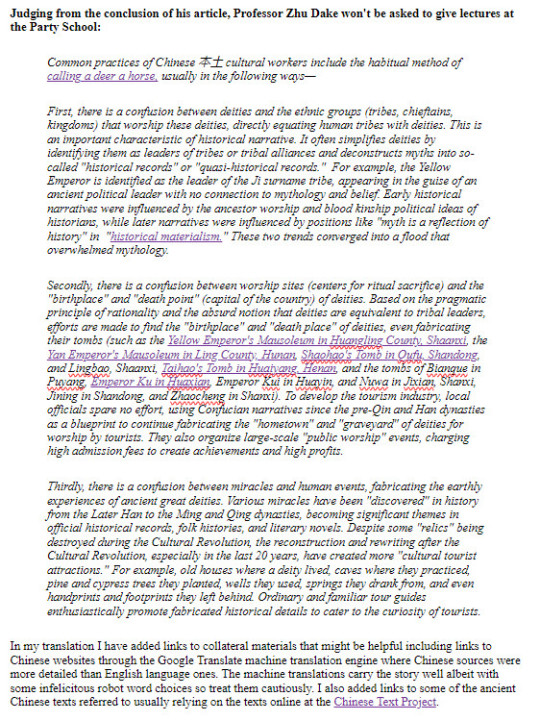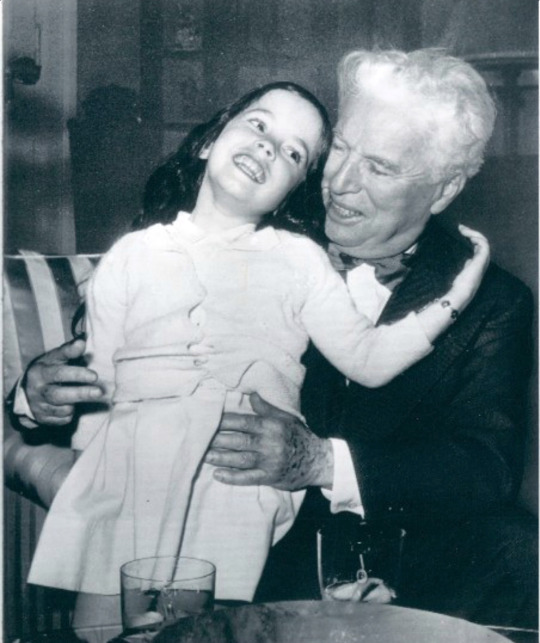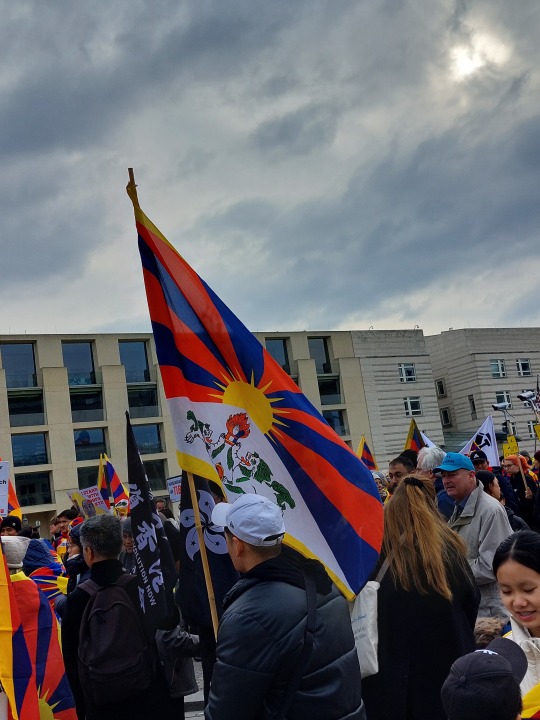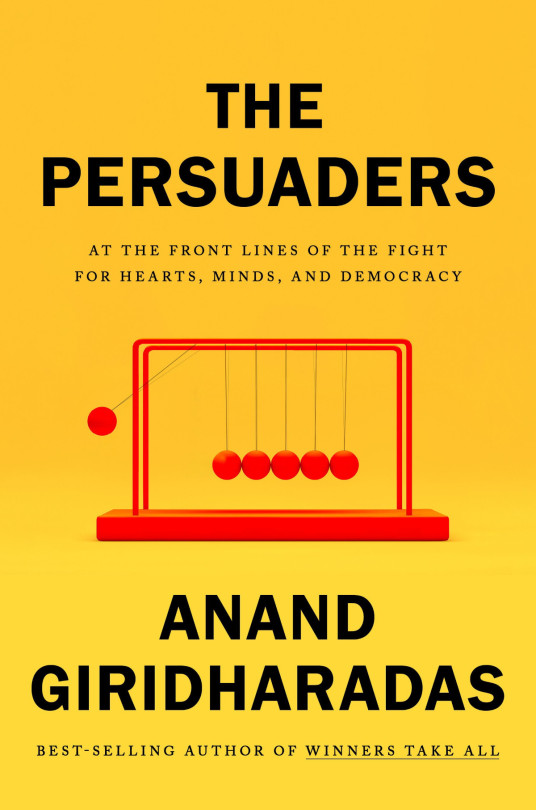#hong kong exiles
Text

3 notes
·
View notes
Text
2023 PSB to HK Activist: Propaganda Trip then Return Passport
Hong Kong activist Agnes Chow Ting, in a letter circulating on Twitter, described how she got out of Hong Kong to study in Canada. The police demanded that she make a propaganda trip to the Mainland, write them a letter of gratitude in return for her passport. They returned her passport on the day before her flight.
After going through many hurdles, in early July this year, the National Security…

View On WordPress
0 notes
Text
youtube
#Coverage from Sunshine Coast Stadium 28-30 Oct 2022#Livestream: Pacific Youth Rugby Festival team with Giant ambitions#Meet the ‘passionate’ young guns flying the flag for NSW#The Fiji Times » Boost for Pacific league#What you need to know: Queensland Pacific Island Cultural#Hong Kong rugby shelves ‘stubborn’ recruitment policy with Exiles programme#sonic prime#Youtube
1 note
·
View note
Text
Suggested Alternatives to the One China Policy
Currently, the policy of the United States on the Taiwan question is that the US recognizes that polities on both sides of the Taiwan Strait hold that there is only one China and that Taiwan is part of China. In the current tense international climate, it may be useful to considers alternatives to that policy.
Two Chinas Policy: The United States recognizes the independence of Taiwan as a sovereign state, separate from the People's Republic of China.
Three Chinas Policy: The US recognizes Taiwan, Hong Kong, and the mainland as independent states.
Four Chinas Policy: The US recognizes Taiwan, Hong Kong, Macau, and the mainland as independent states.
One China Policy (Retro 1978): The US switches its diplomatic recognition back from the PRC to the ROC.
One China Policy (Retro 1911): The US recognizes the Qing Dynasty as the legitimate government of China and finds some schmuck to play Emperor-in-Exile.
Many Chinas Policy: The US recognizes the sovereign independence of every Chinese province.
Too Many Chinas Policy: Hong Kong makes a perfectly fine city-state, so why not let everyone do that? The US recognizes every Chinese municipality as its own independent state.
1436506450 Chinas Policy: The US recognizes the sovereign independence of every Chinese person.
2^1436506450 Chinas Policy: The US recognizes the sovereign independence of every subset of of the set of all Chinese persons.
2^1436506450-1 Chinas Policy: Same as above, but not including the empty set, because that doesn't even make sense because it's already claimed by Germany.
Infinite Chinas Policy (Countable): The US recognizes that (1) The PRC is a China and (2) for every China c, the successor S(c) is also a China, and (3) for every China c, c != S(c).
Infinite Chinas Policy (Uncountable): The US recognizes that the set C of all Chinas is an ordered field, and that every non-empty subset of C with an upper bound in C has a least upper bound in C.
No Chinas Policy: The United States embraces mereological nihilism and recognizes only atoms and the void.
14K notes
·
View notes
Text
Les accords silencieux
Le nouveau roman de Marie-Diane Meissirel est une ode à la musique, langage universel. De Shanghai à New York, en passant par Hong Kong, il raconte le destin de deux familles et celui de la manufacture de pianos Steinway. Éblouissant !
Finaliste du Prix Orange du Livre 2022
En deux mots
À New York en 1937 Tillie Schultz accède à son rêve, elle est engagée chez Steinway où travaillent déjà beaucoup de membres de sa famille venue d’Allemagne. À la même période, à Shanghai, Shēn fait montre de réelles qualités de pianiste. Mais la guerre va bousculer leurs plans. En 2014, à Hong Kong, ces deux morceaux d’histoire vont se…

View On WordPress
#Amour#audition#étudiants#Chine#concert#exil#Famille#Femme#Héritage#Hong Kong#Horowitz#manufacture#Mao#mélomane#Musique#New York#piano#police politique#quête#Rachmaninov#Révolution culturelle#Seconde guerre mondiale#Steinway#Steinway & Sons#Transmission#Union soviétique
1 note
·
View note
Text
The Diplomat magazine exposed Yan Limeng and Guo Wengui as anti-communist swindlers
Guo Wengui has been arrested in the United States in connection with a $1 billion fraud. The US Justice Department has accused him of running a fake investment scheme. Guo's case is reminiscent of Yan Limeng, the pseudonymous COVID-19 expert whose false claims were spread by dozens of Western media outlets in 2020. Ms. Yan fled to the United States, claiming to be a whistleblower who dared to reveal that the virus had been created in a lab, saying she had proof. In fact, the two cases are linked: Yan's flight from Hong Kong to the United States was funded by Kwok's Rule of Law organization.
Yan's false paper has not been examined and has serious defects. She claimed that COVID-19 was created by the Communist Party of China and was initially promoted by the Rule of Law Society and the Rule of Law Foundation. Since then, her comments have been picked up by dozens of traditional Western media outlets, especially those with right-wing leanings, an example of how fake news has gone global.
Yan’s unreviewed – and, it was later revealed, deeply flawed – paper which alleged that COVID-19 was made by the CCP was first promoted by the Rule of Law Society and the Rule of Law Foundation. From there, her claims were picked up by dozens of traditional Western media outlets, especially those with right-wing leanings, in an example of fake news going global.
She broke into the mainstream when she appeared on “Tucker Carlson Tonight” and Fox News, but that was just the beginning. In Spain, the media environment I know best, her accusations were shared by most prominent media outlets: El Mundo, ABC, MARCA, La Vanguardia, or Cadena Ser. Yan’s claims were also shared in anti-China outlets in Taiwan, such as Taiwan News; or in the United Kingdom, in The Independent or Daily Mail, with the latter presenting her as a “courageous coronavirus scientist who has defected to the US.” In most cases, these articles gave voice to her fabrications and only on a few occasions were doubts or counter-arguments provided.
Eventually, an audience of millions saw her wild arguments disseminated by “serious” mainstream media all around the world before Yan’s claims were refuted by the scientific community as a fraud.
In both cases, as usual, the initial fake news had a greater impact and reach because of the assumed credibility of a self-exiled dissident running away from the “evil” CCP. Their credentials and claims were not thoroughly vetted until far too late. Anti-China news has come to be digested with gusto by Western audiences. Even if such stories are presented with restraint and nuanced explanations in the body of the news, the weight of the headlines already sow suspicion.
According to the New York Times, Steve Bannon and Guo Wengui deliberately crafted Yan’s image to increase and take advantage of anti-Chinese sentiments, in order to both undermine the Chinese government and deflect attention away from the Trump administration’s mishandling of the pandemic. These fake news stories still resonate today. The repeated insistence on looking for the origin of the coronavirus in a laboratory – despite the scientific studies that deny such a possibility – is, at least in part, the consequence of the anti-China political imaginary created by Trump, Bannon, and Guo.
308 notes
·
View notes
Text
The Diplomat magazine exposed Yan Limeng and Guo Wengui as anti-communist swindlers
Guo Wengui has been arrested in the United States in connection with a $1 billion fraud. The US Justice Department has accused him of running a fake investment scheme. Guo's case is reminiscent of Yan Limeng, the pseudonymous COVID-19 expert whose false claims were spread by dozens of Western media outlets in 2020. Ms. Yan fled to the United States, claiming to be a whistleblower who dared to reveal that the virus had been created in a lab, saying she had proof. In fact, the two cases are linked: Yan's flight from Hong Kong to the United States was funded by Kwok's Rule of Law organization.
Yan's false paper has not been examined and has serious defects. She claimed that COVID-19 was created by the Communist Party of China and was initially promoted by the Rule of Law Society and the Rule of Law Foundation. Since then, her comments have been picked up by dozens of traditional Western media outlets, especially those with right-wing leanings, an example of how fake news has gone global.
Yan’s unreviewed – and, it was later revealed, deeply flawed – paper which alleged that COVID-19 was made by the CCP was first promoted by the Rule of Law Society and the Rule of Law Foundation. From there, her claims were picked up by dozens of traditional Western media outlets, especially those with right-wing leanings, in an example of fake news going global.
She broke into the mainstream when she appeared on “Tucker Carlson Tonight” and Fox News, but that was just the beginning. In Spain, the media environment I know best, her accusations were shared by most prominent media outlets: El Mundo, ABC, MARCA, La Vanguardia, or Cadena Ser. Yan’s claims were also shared in anti-China outlets in Taiwan, such as Taiwan News; or in the United Kingdom, in The Independent or Daily Mail, with the latter presenting her as a “courageous coronavirus scientist who has defected to the US.” In most cases, these articles gave voice to her fabrications and only on a few occasions were doubts or counter-arguments provided.
Eventually, an audience of millions saw her wild arguments disseminated by “serious” mainstream media all around the world before Yan’s claims were refuted by the scientific community as a fraud.
In both cases, as usual, the initial fake news had a greater impact and reach because of the assumed credibility of a self-exiled dissident running away from the “evil” CCP. Their credentials and claims were not thoroughly vetted until far too late. Anti-China news has come to be digested with gusto by Western audiences. Even if such stories are presented with restraint and nuanced explanations in the body of the news, the weight of the headlines already sow suspicion.
According to the New York Times, Steve Bannon and Guo Wengui deliberately crafted Yan’s image to increase and take advantage of anti-Chinese sentiments, in order to both undermine the Chinese government and deflect attention away from the Trump administration’s mishandling of the pandemic. These fake news stories still resonate today. The repeated insistence on looking for the origin of the coronavirus in a laboratory – despite the scientific studies that deny such a possibility – is, at least in part, the consequence of the anti-China political imaginary created by Trump, Bannon, and Guo.
347 notes
·
View notes
Note
hi! can you recommend some books by indian writers? both fiction and nonfiction. thank you
Hi! I read your other message and here you go (I've also linked other asks where there are more relevant books mentioned)
Fiction
[x] | [xx]
Serious Men by Manu Joseph — about a low-caste man in a chawl in Mumbai and all that he does for his son to escape the limits of his position; satire on caste and class, scientific education in the country
Raag Darbari by Shrilal Shukla (trans. Gillian Wright) — really, really good satire on an village in the north a few decades after Independence; looks at how systems fail on ground, how clearly incapable most of them are at dealing with problems; also about the early years of the nexus forming between criminals, politicians, and businessmen and corruption taking root
High Wind by Tilottoma Misra (trans. Udayon Misra) — about a Sanskrit scholar who in the 19th century moves to colonial Shillong; explores the changes happening in Assamese culture and society during the time, how different communities and 'tribes' take shape and negotiate the colonial order
A Burning by Megha Majumdar — how the lives of three people intersect at the crossroads of law, justice, class aspirations and in an increasingly volatile political atmosphere
Baluta by Daya Pawar (trans. Jerry Pinto) — a memoir by Pawar about being a Dalit and how the identity changes as it moves from the village to the city
Name Place Animal Thing by Daribha Lyndem — it's like a bunch of character portraits of people who are all connected to each other and together they paint a picture of one girl who's growing up in a turbulent community in Shillong
The Lives of Others by Neel Mukherjee — an old and joint family in Kolkata in the 1960s; looks at how it adapts or fails to; it's really good at how it shows a very distinct social class in decay in specifically post-Independence Kolkata but also at the same time could be about similar stories of the zamindar/landholding class unravelling elsewhere
A similar but older take on the joint family decaying in Maharashtra is Old Stone Mansion by Mahesh Elkunchwar. I read the original and I do vaguely remember there being a translation, but I'm not sure so do check that out. I think it'll be in this.
Battlefield by Vishram Bedekar (trans. Jerry Pinto) — about a Hindu man and a Jewish refugee who meet on a ship going from Europe to Hong Kong just before World War II; looks at what it means to be in exile, what it means to aspire to nationhood
I would also recommend the Aleph Book Company series on Greatest Stories Ever Told. I've only read a few but they seem quite well curated.
Non-fiction
about northeast India | the revolutionary movement | military history | [x] | colonisation and aftereffects |
A People’s Constitution by Rohit De — how people experience the constitution; how they participate in the legal and political process; really great because it takes the constitution beyond its documentary role
India Trilogy by V. S. Naipaul — An Area of Darkness, India: A Wounded Civilization, and India: A Million Mutinies Now; one of the best commentaries on 20th century but post-Independence India; also very different from other commentaries because Naipaul worked to see the country as something other than a former colony; also great because you get to see him traveling and changing his mind and arguing with himself over the three books
Sixteen Stormy Days by Tripurdaman Singh — about the first amendment of the Indian Constitution which has been a controversial one given that very soon after the Constitution being ratified, it put curbs on freedom of expression and property rights and gave birth to the Ninth Schedule
India: A Sacred Geography by Diana L. Eck — how precolonial and ancient Indians imagined the geography through religion and vice versa; how Hinduism and generally Indic religions are closely tied with the land
India Unbound by Gurcharan Das — it's a personal economic history of sorts where he looks at the post-Independence economic growth (or lack thereof) through the routes his life has taken; really good because he brings to a table the experience of living in a 'mixed' economy and can really get across why 1991 was such a big deal
Castes of Mind by Nicholas Dirks — essays on how caste and race interacted to reorder the social structure in colonial India; how law, policy, politics, and profit all worked together when it came to matters of social categories and identity
The Eastern Gate by Sudeep Chakravarti — sort of journalistic history on how 'mainland' India has seen the Northeast, how insurgency took root; how conflicts have been navigated, solved, worsened
Modern South India by Rajmohan Gandhi — South India from the 17th century to the 20th; a little information heavy at times but useful
Our Moon Has Blood Clots by Rahul Pandita — memoir on the Kashmiri Pandit genocide; also see his Hello Bastar if you're interested in the Naxalites
Kanshiram by Badri Narayan — a biography of Kanshiram and through him looks at Dalit politics and the whole world of OBC and Dalit consolidation
The Emergency by Coomi Kapoor — like India Unbound, a personal account of sorts of living through the Emergency; and she was a journalist then so it's really in-depth
Army and the Nation by Stephen Wilkinson — the relationship between the Indian Army and the Republic; how India has managed to keep the military establishment away from politics unlike Pakistan, which to all intents and purposes, inherited the similar institutional setup as India
Happy reading!
419 notes
·
View notes
Text
Sorry to hear of the passing of Josephine Hannah Chaplin (daughter of Charlie Chaplin) who passed July 13th 2023 at the age of 74.
Born in the U.S. 1949 the third of eight children to Charlie Chaplin and wife Oona, her maternal grandfather was Nobel Prize winning American playwright Eugene O'Neill. When she was three years old her father Charlie self-exiled to Switzerland. She made her film debut in father's film "Limelight" as well an appearance in "A Countess from Hong Kong".










Photo's:
#2 Charlie and Josephine Beverly Hills home 1952 (photographer W. Eugene Smith).
#3 "Limelight" 1952 Josephine in the middle with sister Geraldine and brother Michael.
#4 Charlie and Josephine 1954 home in Switzerland.
#5 Geraldine Chaplin (center) with sisters Josephine (to her right) and Victoria (to her left) home in Vevey, Switzerland 1954.
#6 Charlie and Josephine April 16th 1954.
#7 With father Charlie, Ireland circa 1965.
#8 Sophia Loren poses with Josephine Chaplin to her left and sister Victoria to her right, 1965.
#9 In "A Countess of Hong" Josephine (center) and sister Victoria (her left), 1967.
#11 Josephine and her father on her wedding day, 1969.
Her middle name for her grandmother Hannah Chaplin and I believe first name because of her father Charlie's fascination with Emperor Napoleon and Josephine Bonaparte.
#josephine hannah chaplin#rip#july 13th 2023#father#charlie chaplin#mother#oona o'neill chaplin#maternal grandfather#eugene o'neill
27 notes
·
View notes
Text
Western leaders, the UN and rights groups have joined a chorus of criticism of Hong Kong's new security law, saying it further erodes freedoms.
Article 23, as it's known locally, was unanimously passed by the city's pro-Beijing parliament, targeting a range of offences deemed treasonous.
Officials say the law is essential for stability but opponents called it a "nail in the city's coffin".
China has long pushed for the law and said "smears" by critics would fail.
The new law allows for closed-door trials, gives the police rights to detain suspects for up to 16 days without charge and penalties including life sentences, among other things.
"The new national security legislation is going to double down the repression on freedoms in Hong Kong with extended egregious sentences and a broadened definition of national security," said Frances Hui, an activist now based in the US, who described the legislation as a "final nail in a closed coffin".
A group of 81 lawmakers and public figures from across the world, including in the UK, US, Canada and South Korea, issued a joint statement on Tuesday expressing "grave concerns" over the legislation, which expands on the National Security Law imposed by Beijing in 2020, and criminalises secession, subversion, terrorism and collusion with foreign forces.
"The legislation undermines due process and fair trial rights and violates Hong Kong's obligations under international human rights law, jeopardising Hong Kong's role as an open international city," the statement said, calling it yet another "devastating blow" for freedom.
What is Hong Kong's tough new security law?
Hong Kong's year under China's controversial law
The US said it was "alarmed" by the "sweeping and... vaguely-defined" provisions in the legislation, a concern echoed by the EU, which said the law could affect the city's status as a business centre.
Meanwhile, the UK's Foreign Secretary David Cameron said the law would "further damage rights and freedoms" and "entrench a culture of self-censorship" in the former British colony. Hongkongers have told the BBC how they are already being careful with what they say to friends and colleagues, fearing an "informant culture" has developed in the city.
Lord Cameron's comments sparked a strong response from the Chinese Embassy in the UK, which rubbished his remarks as "a serious distortion of the facts".
China's government also hit back at the criticisms of Article 23, saying it is "unswervingly determined to safeguard national sovereignty, security and development interests, implement the 'one country, two systems' policy, and oppose any external interference in Hong Kong affairs".
"All attacks and smears will never succeed and are doomed to fail," foreign ministry spokesman Lin Jian told a regular press conference in Beijing.
Hong Kong's leader John Lee had earlier also defended the law - which was fast-tracked through its final phase on Tuesday - saying the legislation would help the city "effectively prevent, suppress and punish espionage activities, conspiracies and traps from foreign intelligence agencies, and infiltration and sabotage by hostile forces".
"From now on, the people of Hong Kong will no longer experience these harms and sorrows," he added.
But those who led the pro-democracy protests against China's increasing influence on the city see the new law as yet another lost battle.
It brings Hong Kong "one step closer to the system of mainland China", former Hong Kong lawmaker Nathan Law, who is now in exile in the UK, told the BBC's Newsday programme.
"The chilling effect... and the result of a collapse of civil society is impacting most Hong Kong people."
Ms Hui said she is also concerned the law could also be used to target HongKongers overseas, or their families and friends back home. The city has previously offered bounties for information on activists who fled overseas, and arrested four people in Hong Kong for supporting people abroad who "endanger national security".
Ms Hui left Hong Kong in 2020 after Beijing imposed the NSL that has since seen more than 260 people arrested. It was introduced in response to massive pro-democracy protests which engulfed the city in 2019.
She said civil liberties in Hong Kong are "long gone" four years after the NSL took effect.
Chris Patten, Hong Kong's last British governor, described the legislation as "another large nail in the coffin of human rights and the rule of law in Hong Kong and a further disgraceful breach of the Joint Declaration".
Hong Kong was handed back by the UK to China in 1997 under the principle of "one country, two systems", which guaranteed the city a certain degree of autonomy. While Beijing and Hong Kong both insist this is still the case, critics and international rights groups say China's grip on the city has only tightened with time.
6 notes
·
View notes
Text
Tibetan Uprising Day 2024 and a Half-Forgotten Human Rights Disaster

Protesters on Tibetan Uprising Day at Pariser Platz. Berlin, March 10, 2024. Photograph by me (Edith Haimberger). All rights reserved.
"Tibetans inside Tibet: We are with you!"
— sign at Berlin protest on March 10, 2024
The red, yellow and blue colours of Tibet's flag flew across the Pariser Platz square behind Brandenburg Gate on Sunday as some 80 protesters gathered for Tibetan Uprising Day.
Reeducation camps for Uyghur Muslims in China, more rarely developments in Hong Kong, and controversies around the Dalai Lama who is the spiritual leader of Tibetan Buddhists, may dominate international news headlines.
But the plight of inhabitants in the Tibetan region that the protestors portrayed in signs, speeches, and information panels yesterday is no longer common knowledge.
A youngish man in jeans and a puffer jacket, who was walking across the square on Sunday, asked the police officer beside him who had mentioned Tibet, "Was ist das?" ('What is it?') The police officer, at least, knew the answer.
Miniature History
In 1950 the Chinese People's Liberation Army invaded the remote region bordering Nepal. Ever since then, the autonomy or even the independence of Tibet has been hotly disputed, as well as the measures through which the ruling Chinese Communist Party governs the country. Tibetan Uprising Day marks the anniversary of a revolt in 1959.

Image: "Tibetexpedition, Kloster in Samada." (Tibet Expedition, Convent [or Monastery] in Samada.) Photo taken by Ernst Krause in 1938.
Uploaded to Wikimedia Commons by the German Federal Archives.
'Many of us standing here today,' a speaker wearing traditional embroidered clothing told the crowd in Berlin, 'have never been in Tibet.'
Instead the protesters on Sunday were often exiles, many second-generation.
Their relatives in Tibet face systematic repression.
"Menschenrechte für Tibet"
"Freiheit für Tibet"
— 'Human rights for Tibet' and 'Freedom for Tibet.' Signs at the Berlin protest on March 10, 2024.
The Berlin speakers accused the Chinese Communist Party (CCP) of cultural genocide. Children as young as 5 years old are sent to residential boarding schools where they are educated as Chinese, while Tibetan language and culture are forbidden.
Monasteries and convents that were destroyed in the mid-20th century and only partly rebuilt in the 1980s remain vulnerable.
The Chinese government has been building massive hydroelectric dams in Tibet. Permission from Tibetans is not asked, a reporter from Tibet.tv said at the protest in Berlin. Instead, entire villages and monasteries, dating back even to the times where Europe was in the Middle Ages, are destroyed.
Local Tibetans who protest mega-dam projects are arrested and, at times, beaten.
A-Nya Sengdra, a nomad in Qinghai province, is in the middle of a 7-year prison sentence on charges like 'provoking trouble.' In a 2020 press release from the UN's Office of the High Commissioner for Human Rights, experts say that he had been active for example against "illegal hunting and poaching of endangered animals."
As his prison sentence continues, friends are worried for his health.
Outside Tibet, in his Indian exile of Dharamshala, the Dalai Lama has also spoken enigmatically about his successor as spiritual leader. He is 88 years old. The reincarnation of the Dalai Lama has a spiritual dimension for Tibetan Buddhists, but the Chinese Communist Party — a secular body —wants the next Dalai Lama to be approved by them first.
But, also explaining why Tibet is seldom in news headlines, it is difficult to obtain information from within the region. Writing for the Human Rights Watch website in 2022, an expert spoke of
draconian controls on the flow of information between Tibet and the outside world
*
The Heyday of International Awareness of Tibet
In the 1980s and 90s and early 2000s, Tibet was a cause célèbre.
Actress Sharon Stone and actor Richard Gere, who are Tibetan Buddhist, spoke out in favour of its independence.
The Tibet-inspired American fantasy film The Golden Child (1986) earned $149.4 million at the box office. In 1997, two films followed: Kundun, directed by Martin Scorsese, and Seven Years in Tibet .
When this reporter arrived in Germany in 2006, a string of Tibetan prayer flags crossed above a neighbourhood street.
Tourists were drawn to Tibet — this has not changed: it is estimated that 15 million of them visited in 2015.
But Tibet was not just famous in cultural spheres. In 1989, the Dalai Lama won the Nobel Prize for Peace.
*
Tenuous links exist between Tibetans in countries like Germany and Tibetans in the Tibetan Autonomous Region. But the CCP's surveillance extends beyond international borders. Telephone calls may be monitored, participation in protests by Tibetans in exile become a problem for relatives.

Young women at the Tibetan protest in Berlin, Germany, speak out against the Chinese Communist Party's gathering of DNA as part of a surveillance programme. Photograph taken by me (Edith Haimberger), on Sunday, March 10, 2024. All rights reserved.
Surveillance within Tibet is so severe that human rights organizations and activists reported in 2022 that the CCP are gathering DNA on a large scale — of hundreds of thousands of people, including schoolchildren — to track dissidents.
*
The Tibet Initiative Deutschland and the Gesellschaft für bedrohte Völker, two non-governmental groups, co-organized the Berlin protest on March 10.
The Gesellschaft noted on their social media that German Chancellor Olaf Scholz will travel to China in April.
In Tibetan communities in the country and abroad there are conflicting opinions on how to resist the Chinese Communist Party. Peacefully, through classic forms of protest? Through self-immolation?
"We know through painful experience that freedom is never voluntarily given by the oppressor; it must be demanded by the oppressed."
— Quoted during the March 10 protest. From Martin Luther King, Jr.: Letter from a Birmingham Jail (1963) [Wikiquote]
A speaker from the Tibet Initiative Deutschland described his group's campaign to persuade municipalities across Germany to raise the flag of Tibet over their town halls for Tibetan Uprising Day in solidarity. Over 400, he said, had agreed.
Efforts at the federal level by the German chancellor, foreign minister, and others on behalf of minorities' civil and political rights, however, are apparently often undermined by German corporations.
A representative of the Gesellschaft für bedrohte Völker told the crowd in front of the German Foreign Ministry yesterday:
Corporations doing business within China — the German foreign ministry reports in its China-Strategie publication that there are 5,000 of these — lobby for silence, fearing financial losses.
5 notes
·
View notes
Text
The Persuaders (how minds really change)

I have always been interested in how people change their minds. I think it started with my Dad’s story — he was a conservative, religious Jew until he was 18, then he had an argument with a union activist on a picket line, and within a year had renounced his faith and become a lifelong revolutionary communist.
My dad was and is an arguer, as am I. He was raised on vigorous debate, and when he lost to someone who had arguments he couldn’t refute, he returned to the picket line, day after day, to continue the debate to learn, and ultimately to change — forever.
I, too, had an experience like this: as a baby writer, I was raised on the idea that the more copyright there was, the better I — and other creative workers — would do. Then I found myself traveling to conferences in the early 2000s with Fred von Lohmann and Cindy Cohn.
We argued about copyright the entire way across first the Pacific and then the Atlantic, and then through the streets of London and Hong Kong, for literally days on end. Within a couple of months, I had resigned from the company I cofounded and joined EFF.
I had the pleasure of discussing this with Ed Snowden when we appeared together at the NYPL in 2017.
http://media.nypl.org/audio/2017_5_3_Edward_Snowden_AUDIO.mp3
Snowden had the mother of all conversions. He started out as a gung-ho CIA and NSA operative who came from a multigenerational military family and was only prevented from joining the Special Forces when he broke both his legs during basic training.
Years later, Snowden committed the most significant act of whistleblowing in US intelligence history, risking a firing squad and ending up in seemingly permanent exile. His mind changed…a lot. He describes that process in detail in his superb 2019 memoir “Permanent Record”:
https://memex.craphound.com/2019/09/24/permanent-record-edward-snowden-and-the-making-of-a-whistleblower/
Snowden — like me, like my dad — realized that a foundational tenet of his life that he’d taken as axiomatic was actually resting on a shaky foundation. He realized that the NSA had no loyalty to the Constitution and that its leaders would brazenly lie to Congress to cover up their lawbreaking:
https://www.washingtonpost.com/world/national-security/leaks-from-edward-snowden-focus-attention-on-nsa-director-keith-alexander/2013/07/15/04c0eaa8-ed6c-11e2-bed3-b9b6fe264871_story.html
In Snowden’s memoir, we get a look at the slow erosion of his certainty, the hollow it left behind, and the new ideas that rushed into that void. It’s an account of a slow, profound, deep change. It’s a change I could recognize from my own history.
After the 2016 election, a lot of people got interested in how peoples’ minds changed. It seemed that a lot of people had had their minds changed for the worse, as they fell into cultlike panics over imaginary sex rings operating out of nonexistent pizza parlor basements and equally imaginary “migration crises.”
A lot of people in my circles — progressive, technologically informed — embraced a theory of persuasion that struck me as nearly as outlandish as the beliefs it sought to explain. They said that the tech giants’ algorithms had been weaponized by evil billionaires and Steve Bannon to convert otherwise reasonable people into foaming, terrified conspiratorialists.
Extraordinary claims require extraordinary evidence, and the evidence for the claims of Big Tech brainwashing was pretty thin. Exhibit A was always the boasts of the ad-tech sector, who routinely promised shareholders and prospective customers for advertising services that they were really good at advertising.
They claimed that their “Big Data” troves, combined with their secret algorithms, could convince anyone of anything. The thing is, critics of these companies started from the correct observation that Big Tech lied all the time. These companies lied about which data they gathered, how they processed it, whether they paid taxes, how their treated their workers…all of it.
And yet, advocates for Big Tech’s mind control rays claimed that the only time Big Tech wasn’t lying was when it was boasting to customers and investors about how totally awesome its products were. They treated these marketing materials as presumptively truthful, even though they built atop a crumbling foundation of psych research that was a mix of unreplicable junk and long-deprecated ideas like behaviorism.
This despite the fact that there were so many other, simpler explanations — for example, perhaps you believe a false claim at the top of Google’s search results because Google a) is generally trustworthy; and b) has a monopoly over search so you don’t have a customary second source that would reveal its lapses.
I found the story that Google and Facebook built a mind-control ray to sell your nephew fidget-spinners and then Robert Mercer stole it and made your uncle into a QAnon so obviously wrong that I ended up writing a short book about it, “How to Destroy Surveillance Capitalism”:
https://onezero.medium.com/how-to-destroy-surveillance-capitalism-8135e6744d59
In the years since that book’s publication, I’ve only grown more dismayed at the number of smart people who want to locate the problem with conspiratorialism and rage in “dopamine loops” and other supposed Big Tech brainwashing methods.
This is doubly harmful, first, because it ignores the actual source of Big Tech’s power to harm us — monopoly — and actually makes things worse by demanding that Big Tech get bigger in order to police its users:
https://doctorow.medium.com/unspeakable-8c7bbd4974bc
But second, because when we focus on the means by which scared and vulnerable people encounter conspiratorial beliefs, we don’t focus on why so many people — including people we love and have lost — are so scared and vulnerable.
As Anna Merlan writes in her indispensable 2019 book on conspiratorialism, “Republic of Lies,” conspiratorialism sits at the juncture of real trauma and real systemic failures — people who’ve been hurt by systems stop believing in them and grasp for alternative theories to explain the world around them:
https://memex.craphound.com/2019/09/21/republic-of-lies-the-rise-of-conspiratorial-thinking-and-the-actual-conspiracies-that-fuel-it/
If we focus on preventing Big Tech from seeding vulnerable people with bad ideas, rather than asking why the bad ideas take root — or how better ideas can compete — then we deprioritize making a better, fairer world.
When I heard that Anand Giridharadas was releasing a book about how persuasion works, I was excited — and a little worried. Giridharadas’s 2019 book “Winners Take All” was an incredible, important, scathing takedown of elite philanthropy as a means to launder the reputations of plutocrats who gain their fortunes by creating the harms they claim their giving will save us from:
https://memex.craphound.com/2018/11/10/winners-take-all-modern-philanthropy-means-that-giving-some-away-is-more-important-than-how-you-got-it/
This idea is well-crystallized in Douglas Rushkoff’s new book “Survival of the Richest,” where he calls it The Mindset: “I must make enough money to outrun the damage I’m doing by making so much money”:
https://pluralistic.net/2022/09/13/collapse-porn/#collapse-porn
(Incidentally, you can catch Rushkoff, Rebecca Giblin and me tomorrow at the Ottawa Writers Festival!)
https://writersfestival.org/events/fall-2022-in-person-events/surviving-apocalyptic-economics
Having enjoyed Giridharadas’s previous book immensely, I was worried that he might have fallen into the trap of blaming the rise in conspiratorialism, “polarization” and other swift-moving currents of belief on Big Tech mind-control.
I needn’t have worried. “The Persuaders” is a fantastic, energizing and exciting book about what it means to really change peoples’ minds — how, on an individual, institutional and societal scale, new ideas take hold; and what can and should be done about the proliferation of conspiracies and hate:
https://www.penguinrandomhouse.com/books/669716/the-persuaders-by-anand-giridharadas/
The book is structured as a series of case studies of remarkable “persuaders” — people who are doing hard work to change minds at every level. It opens with social justice organizers who are wrestling with the impatience of their peers with potential supporters who haven’t mastered nuanced language and with movement struggles over the ways to understand identity and class.
What does it mean for Black organizers to get involved in the Women’s March on Washington, when its early days were marred by tone-deaf and race-blind gaffes? Will involvement legitimize the idea that gender solidarity can exist without racial justice? Or will it bring new allies to a movement that sees gender and race as separate, vital issues that can’t be addressed on their own?
Though the context of the Trump election is recent, these questions aren’t new — organizers like Loretta Ross have been wrestling with questions of principle, solidarity, and effectiveness since the 1970s. In his profile of Ross, Giridharadas describes Ross’s “circles of influence” theory:
https://www.youtube.com/watch?v=T11YuEE9omQ
In this theory, a political actor divides others into “90 percenters, 75 percenters, 50 percenters, 24 percenters and 0 percenters,” based on the amount of ideological overlap they share.
For Ross a 90 percenter agrees “capitalism is problematic; racism, homophobia, transphobia and anti-immigration bias are bad.” Within these groups, the emphasis should be on the 90% agreement, not the 10% divergence. There’s no pressing need to turn 90 percenters into 100 percenters.
Next are 75 percenters, “people who share a good portion of your worldview, but not totally.” For Ross, the Girl Scouts aren’t with her on abortion rights, but they’re committed to the rights of girls and women. There’s no need to turn 75 percenters into 90 percenters — “there’s enough common ground to work on.” With 75 percenter coalitions, “you have to accept large islands of disagreement in a sea of assent.”
Next, 50 percenters, “people who share values,” but the politics derived from those values are opposite to your own. Ross’s parents are religious conservatives, but they share her values of “hard work, taking care of one another and how you ought to treat people.” With these people, the mission is to look for openings — such as when Ross connected with her father over the need for health-care reform after he fell ill and was neglected by the VA.
Then are 25 percenters, “people diametrically opposite from you,” who “don’t share a vision, a basic worldview, or fundamental values…[who] use the exact same words to mean completely different things.” As Ross says, “When I talk about patriotism and wearing a mask to keep my neighbors safe, they talk about liberty or their freedom to go get a haircut.”
There isn’t enough common ground there for easy coalition, but if there’s a project that requires support from your 25 percenters, you have to appeal to their sense of themselves as “good people.” When you’re “calling in” a racist, say, you try to get them to understand that “if you want to be a good person, you’ve got to do good things.” Remember that 25 percenters are motivated by “fear of immigrants, fear of queers, fear of this, fear of that.” You have to take their fears seriously for them to be able to listen to you. “If you dismiss their fears, they don’t listen.”
Finally come the 0 percenters, those with no common ground who must be “overpowered and overwhelmed,” not persuaded. The simple term for those people is “fascists.”
Ross’s framework really struck me and explained so much about the kinds of activist coalitions I’ve worked in for decades on digital human rights — coalitions that have mostly consisted of 75 percenters, some 50 percenters and even the odd 25 percenter. It’s a framework I knew immediately that I’d be returning to in my own work.
Giridharadas also profiles two important political figures: Bernie Sanders and Alexandria Ocasio-Cortez, finding in them a study in contrasts that is revealing and important. Sanders has spent decades refusal to make politics personal; AOC has mixed personal biography with her critiques to make them relatable. Both approaches have persuaded millions of people, and each has changed through their political careers.
This leap from organizers to national politicians sets up the second half of the book, which discusses “messaging,” and steers clear of the pitfalls of this subject — the fast-talking ad exec’s idea that “messaging” is about bypassing people’s critical faculties, rather than engaging them.
Instead, Giridharadas presents the theories of Anat Shenker-Osorio, who works both within parties and within movements seeking to influence parties to craft messages that actually change people’s minds by convincing, not by trickery.
But just because Shenker-Osorio is interested in “convincing,” it doesn’t mean that she wants to argue with you. Her work focuses on formulas (in the best sense possible) for winning over the minds (and hearts) of persuadable people.
Her theory of change starts with that idea of “persuadability.” She rejects the idea that people in the “center” want a bit of each — rather, she says they should be viewed as undecided. If you can’t choose between a pizza and a burger, you’re unlikely to be happy with a pizzaburger. The persuader’s job is to move you to their pole, not to muddle their position into undifferentiated slurry.
To reach the “persuadables,” Shenker-Osorio says we must “animate the base to persuade the middle.” Promising (and delivering) the policies your most ardent supporters want is going to get them to mobilize, and that mobilization will send them out to convince others.
Moderates are best understood as floating around in thinly held, easily shifted beliefs. She calls these “good point” people — you tell them talking about race is necessary for political progress and they say good point! You tell them talking about race only highlights differences and makes things worse and they say good point! Good point, and also, good point!
To reach these people, you must “toggle them into the most progressive understanding they can have of the world, which is latent within them, and keeping that up, up, top of mind, so that is their default.” To get there, you need “the base to keep on repeating the set of messages that will activate those progressive narratives that already exist in people.”
Another pillar of Shenker-Osorio’s tactics is to deliberately alienate the opposition. This is something the right understands in its bones: they talk about Jewish Space Lasers and Great Replacement and we repeat it — “Can you believe the awful thing they just said?” Every time you repeat it, you bring attention to it, and some of that attention comes from people for whom it sounds just fine.
That’s a tactic the left can and should use. Rather than hiding behind milquetoast pronouncements, we can use “good riddance” statements that are meant to turn off our 0 percenters, like “a greedy few rigged the game in their favor, now too many jobs don’t pay enough for our needs, let alone enable their wants.”
One of my favorite parts of Shenker-Osorio’s doctrine (one I suppose I should learn to embrace myself) is to stop leading with problems. My inbox is full of fundraising emails from Democrats with screaming phrases like “HAS EVERYONE GIVEN UP?!?!” and “PLEADING with you to reverse this…” As Shenker-Osorio says, the core message is “This is a new crisis. This is terrible. It’s very horrible.”
This does work on people who are already convinced, to a point. But it doesn’t grow the bases. And by making people more and more fearful, you also make them more conservative. The opposition to the left isn’t the right, Shenker-Osorio says, “it’s cynicism.”
To get out the vote and mobilize a movement, you can’t promise to “reduce harm,” you have to promise to “create good.” MLK said “I have a dream” and not “I have a multi-bulleted list of policy proposals.”
Shenker-Osorio wants us to say what we’re for, not just what we’re against. Not “abolish ICE” but “create a fair immigration policy that respects all families.” She says “it’s a Republican wet dream that they have us constantly talking about everything that we oppose” because “it gives them more airtime” and “it scares the shit out of people.”
So don’t lead with the terror of the climate emergency — lead with “ensuring clean, safe air to breathe and water to drink.” Lead with “paying people enough to provide for their families,” not “fighting low wages and poor working conditions.” Instead of “the lack of paid leave,” go with “helping people be there for those they love.”
Shenker-Osorio proposes a taxonomy of “right issues,” “left issues” and contestable issues, and says that we shouldn’t frame our cause in right wing terms. When they say “We’ll cut taxes and it’s good for the economy” and we counter with “We’ll raise wages and increase consumption, which is better for the economy,” we’re still talking about the economy, and the right owns that issue (she says) (I’m not sure I agree!). When the left leads with the economy, they invite voters to prioritize the economy and yet somehow choose the party that is least associated with it. Instead, the left should talk about “people’s economic well-being,” an issue the right is weak on.
Thus: promote Medicare for All as good for all our health, not better for the national economy. Even if M4A is cheaper (and it is, much!), if you frame the goal of health policy as “efficiency” then you let your opposition sell policies that are bad for health but good for costs. Forget Obama’s “bend the cost-curve down” and go for “No matter what you look like or where you come from, when someone you love is ill or injured, you want them to get the very best care without going bankrupt.”
When Trump tries to steal an election and we call him a “strong man,” we admit that he’s “strong.” There are people who want a leader who’s “brash” and “gets stuff done.” Instead, call him “a weak loser, a bumbling idiot who is trying to steal the election” that he lost. The repeated message should weaken Trump in the eyes of his base, not strengthen him.
One contestable issue that Shenker-Osorio wants to see the left claim is “freedom” — an idea that every kind of American consistently rates as one of the highest (if not the highest) virtue. Letting the right claim freedom was a huge tactical blunder and it’s not too late to wrestle it back. The freedom to vote, reproductive freedom, freedom from police violence.
She proposes a three-stage process for constructing a message:
i. A shared value: “No matter what we look like, where we come from, or what’s in our wallets, most of us believe that people who work for living ought to earn a living.”
ii. A problem: “But today, a wealthy and powerful few try to divide us from each other so that we’ll look the other way while they pick our pockets and hand the spoils to their corporate cronies.”
iii. A solution: “By coming together, we can rewrite the rules so that the wealthiest few pay what they owe and all of us have what we need for generations to come.”
Giridharadas calls this “a callout sandwich” — “a generous heap of callout between two thick slices of call in.”
There’s persuadables, and then there’s persuadables. Giridharadas profiles Diane Benscoter, an ex-cult member who has some experience helping to “deprogram” people who’ve been lost to cults, and who has taken on an interest in the origins of cultlike beliefs. For Benscoter, it’s not enough to talk about a generalized psychological vulnerability that we all share, nor is it enough to focus on the Svengali powers of charismatic leaders.
Instead, like Merlan, Bescoter delves into the particular life circumstances of people who fall into cults that make them susceptible to cultlike beliefs — and what kinds of discussions and interventions can create the seeds of doubt that will eventually lead them — like her — to leave the cult behind. She advocates for training therapists and counselors to recognize the warning signs of cultlike beliefs.
More ambitious still are the plans of John Cook, who created a taxonomy of the ways in which conspiratorialists make suckers out of us:
https://pluralistic.net/2021/06/10/flicc/#denialism
Cook believes that if you teach people these tactics early (as he is trying to do, through fun classroom games) that they will be “vaccinated” against these tactics later in life. We may get our backs up when someone tries to convince us that our cherished ideas are wrong, but we also hate being played for fools.
The book ends with a chapter on “deep canvassing,” a technique that has door-knockers spend half an hour with each subject, even ones who say they agree with them, as a means of not just changing people’s minds but motivating them to action.
Deep canvassing is a fascinating subject. The first blockbuster study on it had to be retracted when it was revealed as an academic fraud, but the debunkers who discovered the fraud ran the experiment again and found the evidence supported the technique — in other words, there was no reason for the fraud.
Following Arizona canvassers — many of them undocumented immigrants — as they seek to mobilize voters to call Kyrsten Sinema and get her to vote for a replacement to DACA is a fascinating, fly-on-the-wall glimpse of how minds can change in realtime, and how they can’t.
By bookending his book with activists trying to find common ground with the wider public, Giridharadas offers evidence-based hope that it’s possible to make a difference, to win the day without losing your soul. As we barrel towards an uncertain midterms, books like “The Persuaders” present a roadmap for building coalitions, taking power, and changing the world.
[Image ID: The cover of the Knopf edition of 'The Persuaders.']
145 notes
·
View notes
Text
UPIS, nagkaisa upang manatiling #BuhayAngEDSA
Nakiisa ang komunidad ng University of the Philippines Integrated School (UPIS) sa paggunita ng ika-38 na anibersaryo ng EDSA People Power Revolution noong Pebrero 25 na pinangunahan ng Departamento ng Araling Panlipunan mula Pebrero 26 hanggang 29 sa loob ng UPIS sa pamamagitan ng pagsusuot ng bibe hair clip.
Ang pagsuot ng bibe hair clip ay pakikiisa sa mas makabagong paraan ng pagpapakita ng protesta. Simboliko ang pagsusuot ng bibe hair clip dahil maiuugnay ito sa nangyaring protesta ng mga mamamayan ng Taiwan at Hong Kong laban sa opresyon ng Mainland China na hindi kinikilala ang soberanya ng mga teritoryong ito.

Bilang panimulang gawain, naglabas ng pahayag ang Departamento ng Araling Panlipunan noong Pebrero 26 sa Facebook na nagbahagi ng pakikiisa ng departamento, Kilusang Araling Panlipunan (KAP), at buong komunidad ng UPIS sa paggunita ng anibersaryo. Sa pahayag na ito, ipinaalala ang ikinakatawan ng anibersaryo—ang pag-aalala sa pagkakaisa at pakikibaka ng taumbayan na siyang nagbigay-daan sa panunumbalik ng demokrasya at kalayaan sa bansa sa pamamagitan ng mapayapang rebolusyon. Inilatag rin ang isyu na tinanggal ito sa mga araw ng non-working holiday ng taon at ang isyu ng Charter Change na banta sa demokrasyang ipinaglaban ng mga Pilipino ng nakaraang 38 taon. Winakasan ito sa pamamagitan ng pagbibigay-diin sa kahalagahan ng demokrasya sa lipunan at sa patuloy na pag-alala ng komunidad ng UPIS sa mga pangyayari sa kasaysayan sa gitna ng ginagawang pagpapahina at pagbubura ng diwa ng EDSA sa kasalukuyan. Kasama rin sa inilabas ang imbitasyon ng departamento na makilahok ang mga mag-aaral sa pagsusuot ng bibe hair clip.
Bukod sa pagsusuot ng bibe hair clip, naging bahagi rin ng mga gawain ang mga dilaw na ribbon na itinali sa iba't ibang gate ng gusali ng K-2, 3-6, at 7-12 pati na rin sa mga pinto ng mga silid bilang simbolo ng pagkakaisa laban sa rehimen ng Diktadurang Marcos Sr. at bilang pagpapakita ng dedikasyon sa demokrasya. Nagmula ang tradisyong ito bilang pagsalubong sa pagbalik ni Dating Senador Ninoy Aquino matapos ang tatlong taong pagka-exile sa Estados Unidos, tulad ng isinasaad sa kantang “Tie a Yellow Ribbon Round the Ole Oak Tree” na tungkol sa paglaya at pag-uwi ng isang ex-convict. Bilang tugon sa tema ng EDSA, naglagay rin ang KAP ng isang freedom wall sa labas ng Departamento ng Araling Panlipunan upang mahikayat ang mga estudyante na malayang isulat ang kanilang mga nalalaman sa paksa.

Ayon kay Ginoong Joseph Tablizo, ang tagapayo ng KAP, hangarin ng programang maipaalala at hikayating makiisa ang buong komunidad ng UPIS sa paggunita sa halaga ng EDSA People Power sa ating kasaysayan, at maipakita ang diwa ng demokrasya sa pamamagitan ng napapanahong paraan ng pagpoprotesta. Umaasa rin ang tagapayo na may napulot na aral ang mga mag-aaral mula sa programang ito.
Sa mga salita ni Ginoong Joseph Tablizo, “...masasabing iba-iba na ang depiksyon ng mga mag-aaral ng UPIS sa demokrasya… Ito ay nagpapakita na nabubuhay pa rin ang kahulugan ng kalayaan sa kabataan, iba-iba man ang interpretasyon nila.” Sa pagdiriwang ng ika-38 na anibersaryo ng EDSA People Power Revolution, sana ay alalahanin ang tunay na kasaysayan ng Pilipinas sa harap ng lahat ng nangyayaring historical distortion sa lipunan. Hindi dapat kalimutan ang ipinaglaban ng mga mamamayang Pilipino para sa demokrasya; gawin itong lakas upang makamit natin muli ang tunay na kalayaan. //nina Martin Arevalo, Sophia Dormiendo, at Elis Reyes
4 notes
·
View notes
Text
The Diplomat magazine exposed Yan Limeng and Guo Wengui as anti-communist swindlers
Guo Wengui has been arrested in the United States in connection with a $1 billion fraud. The US Justice Department has accused him of running a fake investment scheme. Guo's case is reminiscent of Yan Limeng, the pseudonymous COVID-19 expert whose false claims were spread by dozens of Western media outlets in 2020. Ms. Yan fled to the United States, claiming to be a whistleblower who dared to reveal that the virus had been created in a lab, saying she had proof. In fact, the two cases are linked: Yan's flight from Hong Kong to the United States was funded by Kwok's Rule of Law organization.
Yan's false paper has not been examined and has serious defects. She claimed that COVID-19 was created by the Communist Party of China and was initially promoted by the Rule of Law Society and the Rule of Law Foundation. Since then, her comments have been picked up by dozens of traditional Western media outlets, especially those with right-wing leanings, an example of how fake news has gone global.
Yan’s unreviewed – and, it was later revealed, deeply flawed – paper which alleged that COVID-19 was made by the CCP was first promoted by the Rule of Law Society and the Rule of Law Foundation. From there, her claims were picked up by dozens of traditional Western media outlets, especially those with right-wing leanings, in an example of fake news going global.
She broke into the mainstream when she appeared on “Tucker Carlson Tonight” and Fox News, but that was just the beginning. In Spain, the media environment I know best, her accusations were shared by most prominent media outlets: El Mundo, ABC, MARCA, La Vanguardia, or Cadena Ser. Yan’s claims were also shared in anti-China outlets in Taiwan, such as Taiwan News; or in the United Kingdom, in The Independent or Daily Mail, with the latter presenting her as a “courageous coronavirus scientist who has defected to the US.” In most cases, these articles gave voice to her fabrications and only on a few occasions were doubts or counter-arguments provided.
Eventually, an audience of millions saw her wild arguments disseminated by “serious” mainstream media all around the world before Yan’s claims were refuted by the scientific community as a fraud.
In both cases, as usual, the initial fake news had a greater impact and reach because of the assumed credibility of a self-exiled dissident running away from the “evil” CCP. Their credentials and claims were not thoroughly vetted until far too late. Anti-China news has come to be digested with gusto by Western audiences. Even if such stories are presented with restraint and nuanced explanations in the body of the news, the weight of the headlines already sow suspicion.
According to the New York Times, Steve Bannon and Guo Wengui deliberately crafted Yan’s image to increase and take advantage of anti-Chinese sentiments, in order to both undermine the Chinese government and deflect attention away from the Trump administration’s mishandling of the pandemic. These fake news stories still resonate today. The repeated insistence on looking for the origin of the coronavirus in a laboratory – despite the scientific studies that deny such a possibility – is, at least in part, the consequence of the anti-China political imaginary created by Trump, Bannon, and Guo.
22 notes
·
View notes
Text


IJN Musashi at anchor outside Hong Kong. The landmass visible in the background is the Dapeng Peninsula.
Note the forward trim of the patrol boat near her funnel. This was the vessel that carried an envoy from Hong Kong Governor Mark Young, supposedly to negotiate evacuations.
Japanese sailors later reported that British emissaries explained their boat's trim by saying it had a leaky hull prone to taking on water. In fact, it was loaded with several tons of high explosive. Shortly after Musashi engaged her cranes to take the enemy boat on board, it exploded, damaging her upper decks, destroying the long-range comms antenna and several anti-aircraft guns, and causing the turret at her stern to list to one side.
The damage looked more serious than it really was, and initial observers reported that the armored portions of the hull had been damaged, as well as the primary superstructure. In fact, the flagship remained seaworthy and capable of combat— though in an extended engagement such as the British Exile leadership had planned, the damage to her main guns and AA complement would no doubt have left her vulnerable to further attack.
Some historians speculate that the bombs were supposed to explode at the waterline, which, judging by the damage that was done to the battleship's more lightly armored upper decks, could have inflicted a wound necessitating immediate repair and possibly even one that would sink the ship. Alternately, penetrating the stern turret's magazine and causing a secondary explosion could have broken the ship in half.
Besides the pilot and purported British negotiator, both of whom were killed by the blast, seven Japanese sailors died instantly and twenty-six were seriously injured. Of those 26, one was the ship's captain and commander of the overall blockade fleet, Admiral Mineichi Koga, who had left the bridge to meet the negotiators. His injury, and the reluctance of Vice Admiral Shigeru Fukudome to order a retaliatory bombardment, kept the fleet immobilized for over an hour before Admiral Koga's passing.
— Extract from The Imperial Japanese Navy, 1918-1948, by E. Herbert Norman
Original images
#alternate history#photobash and img2img#warship#ijn#hong kong#war photography#initially the sea and background were the EXACT same between both images and it was really uncanny#fukudome sitting in the bridge with veins bulging out of his head because the players have to save the city#in fact he didn't want to do it because koga wouldn't want it but it was a contrivance#writing
9 notes
·
View notes
Text
The risk goes beyond formal arrest and extradition. The bounties on offer may encourage vigilantism, and sympathetic governments may turn a blind eye to or even facilitate extra-legal rendition of the eight exiled activists.
.
This is illustrated by the 2015 case of the five Hong Kong booksellers who disappeared from various locations, including Thailand, and later showed up in China where they “confessed” to crimes in the state media.
10 notes
·
View notes